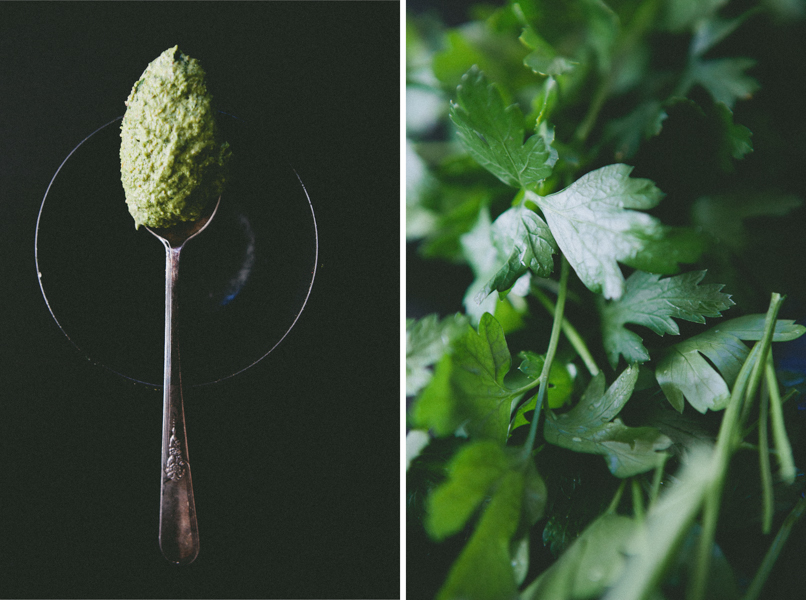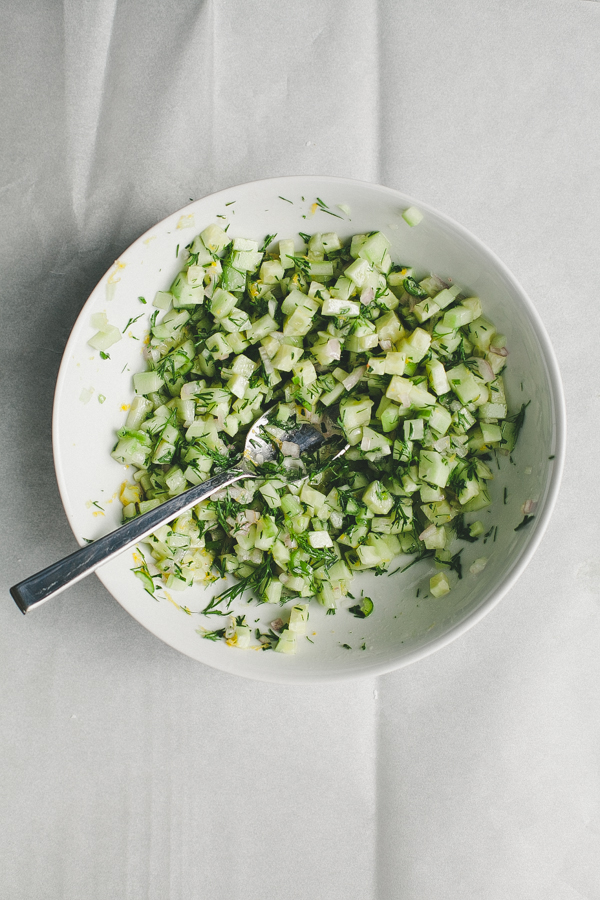Food photography styling is hot right now. With Instagram and Twitter, everyone thinks they’re a food stylist nowadays. But how to style food for photos is an important skill for photographers, from food bloggers to commercial photographers. I’ve been taking photos of food for over 5 years now, and in that time I’ve learned several tricks on how to style food for photography. A good food “glamor shot” pulls the viewer in and leaves them feeling hungry and inspired.
Below are my favorite tips for styling food and getting the best shot.
1. Find the light
Lighting is everything in photography. Food, in particular, loves the glow of natural light. I’ve seen some incredible food photos using studio lights, but, for me, natural light is king. The best light may not be in the kitchen. Maybe there’s a large window in the dining room or even in your kids’ bedroom.
Wherever the light is, that’s where you shoot. I took a workshop from a photographer who did an entire restaurant shoot in the alley by the dumpster because that’s where the best light was. Find the light and then shoot there.
2. Control the light
Again with the lighting because it’s just that important. Use white or black foam boards to bounce or block light on the subject. This will give more interest and contrast to the image. If the sun is bright and creating harsh shadows, cover the window with a sheet.
One of my favorite techniques is to tape sheets of parchment paper on the window to diffuse the light and reduce the contrast. Since I live in Seattle, the land of gray, I don’t have to deal with harsh shadows very often, so be prepared to adapt to your environment.


3. Keep it simple
Don’t overcomplicate the image. Keep it clean and simple. Too many things on the picture plane can be distracting and take away from the focus — the food. Allow the food to speak for itself.
4. Think about the mood
Is it a dark, wintery stew or a fresh fruit ice pop? Let the food dictate the mood. Choose props that help tell a story. In the winter, I tend to shoot on darker backgrounds. I’ll use blackboards to make the light more dramatic and moody. In the summertime, when the light is bright and the food is fresh, my images tend to have a light, airy feel to them.
This isn’t always the case. However, you are telling a story, and the mood of the image is one of the main ways you can communicate that story.
5. Composition
Keep your center of interest out of the middle, even if it’s just slightly off-center, as it makes the image more interesting. Use negative space to create intrigue. The goal of the image is to take your viewer on a journey throughout the entire photo. There should be a main subject. From there, use lines in the linens, props, some little detail on the plate, etc., to drive the viewer’s eye all over the photo and then gently off the edge.
When a viewer is satisfied with the journey, he/she will feel as though it was a good photo. The best way to learn about photography composition is to study successful photographs. Look at an image you like, then ask yourself, “Why do I like this?” Try to pay attention to the path of your eyes. The more questions you ask the more you will understand successful composition.

6. Food is messy and that’s okay
Cooking and eating can be messy. I love photos where it looks like the photo was taken mid-meal because there’s life in those images. I want to look at a food photograph and feel as if I can pull up a chair and start eating. If the plate is perfectly pristine, I’m not as inclined to want to jump in.
Keep your eyes open to the beauty in the messy moments. Stop and shoot the way the beet has stained the cutting board. Notice the Warshak-like designs from the dark sauce. I love that food photography forces me to stay present throughout the entire process. I had no idea how stunning an onion really was until I started taking photos of it. If you are totally set on shooting only a perfect, finalized dish, you’ll miss those moments.
Looking to go pro with your food styling? Then you might also be interested in our post on how to get your photography work noticed.
7. Let the food be the star, not the props
I know, I know, you just found this amazing rusted egg beater and you want to somehow work it into the image. But, let’s not forget that food is the real star here! Sometimes it’s enough to just shoot a plate of food on an interesting background and call it good. Also, crumbs make lovely props. A few here and there add life and reality to the image.
8. Water your food
I always shoot produce with a bit of water on it. It’s a chance to add more interest in the lighting as the water droplets pick up lovely highlights. Moreover, the food just looks so much better with a touch of shine.
If I’m shooting on location, I’ll keep a cup of water handy for giving the food a quick spritz. Herbs in particular need a good drink. Little details like this turn a photo from good to great.

9. Show the process and dig in
Don’t be afraid to mess up the plate. Eat a few bites and then take the shot. See, you can have your cake and eat it too!
10. Keep it real
Take pictures of real food. There’s no need for tricks. You won’t ever see me using mashed potatoes in place of ice cream. Food is truly beautiful in its imperfections, so I say bring on the drips!

Let us see your best food photos by uploading them in the Craftsy Project Gallery today! Not ready yet? Learn more about food photography here.
You can learn so much more information about photography, particularly product photography in the Craftsy classes Shoot it! A Product Photography Primer and Commercial Photography: Taking Product Photos That Sell.


Share tips, start a discussion or ask one of our experts or other students a question.
No Responses to “Top 10 Tips for Better Food Photography Styling”